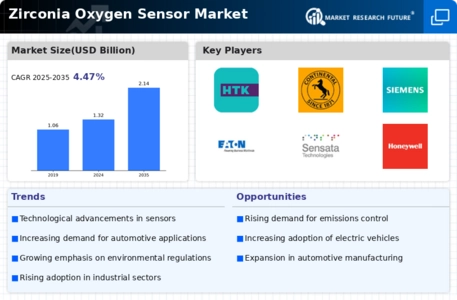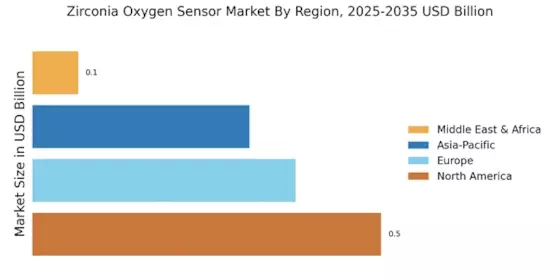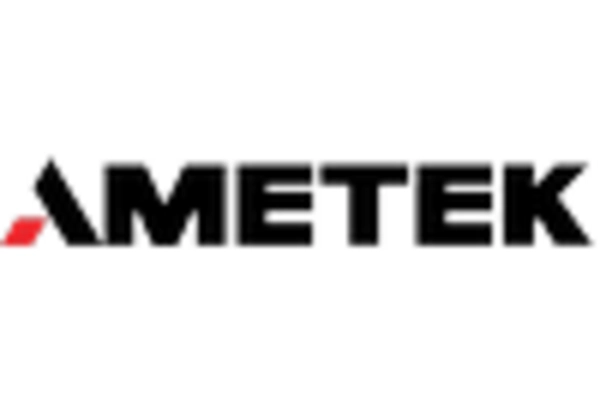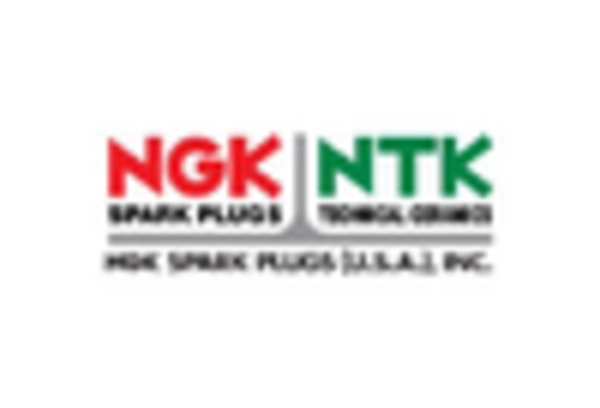Stringent Emission Regulations
The implementation of stringent emission regulations across various regions is a critical driver for the Zirconia Oxygen Sensor Market. Governments are increasingly mandating lower emissions from vehicles and industrial processes, which necessitates the use of advanced oxygen sensors to monitor and control emissions effectively. The regulatory landscape is evolving, with many countries adopting more rigorous standards, thereby creating a robust demand for zirconia oxygen sensors. This trend is expected to continue, as compliance with these regulations is essential for manufacturers. The market is projected to expand as industries seek to adopt technologies that facilitate adherence to these environmental standards.
Growth in Automotive Production
The growth in automotive production is another significant driver for the Zirconia Oxygen Sensor Market. As vehicle production ramps up, the demand for high-performance components, including zirconia oxygen sensors, is likely to increase. The automotive industry is experiencing a resurgence, with production levels expected to rise by approximately 5% annually over the next few years. This growth is driven by consumer demand for new vehicles and advancements in automotive technology. Consequently, manufacturers are focusing on integrating more sophisticated sensor technologies to enhance vehicle performance and compliance with environmental regulations, thereby boosting the zirconia oxygen sensor market.
Rising Demand for Fuel Efficiency
The increasing emphasis on fuel efficiency in automotive design appears to be a primary driver for the Zirconia Oxygen Sensor Market. As manufacturers strive to meet stringent emissions regulations, the demand for advanced oxygen sensors, particularly zirconia-based sensors, is likely to rise. These sensors play a crucial role in optimizing combustion processes, thereby enhancing fuel efficiency. According to recent data, the automotive sector is projected to witness a compound annual growth rate of approximately 4% over the next few years, which may further bolster the demand for zirconia oxygen sensors. This trend indicates a growing recognition of the importance of these sensors in achieving both economic and environmental objectives.
Technological Innovations in Sensor Design
Technological advancements in sensor design and manufacturing processes are likely to propel the Zirconia Oxygen Sensor Market forward. Innovations such as miniaturization, improved sensitivity, and enhanced durability are becoming increasingly prevalent. These advancements not only improve the performance of zirconia oxygen sensors but also expand their applicability across various sectors, including automotive, industrial, and environmental monitoring. The market for these sensors is expected to grow significantly, with estimates suggesting a potential increase in market size by over 20% in the next five years. This growth is indicative of the industry's response to the evolving needs for more efficient and reliable sensing technologies.
Increasing Awareness of Environmental Issues
The rising awareness of environmental issues among consumers and industries is influencing the Zirconia Oxygen Sensor Market. As stakeholders become more conscious of their environmental impact, there is a growing demand for technologies that can help reduce emissions and improve air quality. Zirconia oxygen sensors are integral to achieving these goals, as they provide critical data for optimizing combustion processes. This heightened awareness is likely to drive investments in cleaner technologies, including the adoption of zirconia oxygen sensors across various applications. The market is expected to benefit from this trend, as more organizations seek to implement solutions that align with sustainability objectives.


















Leave a Comment